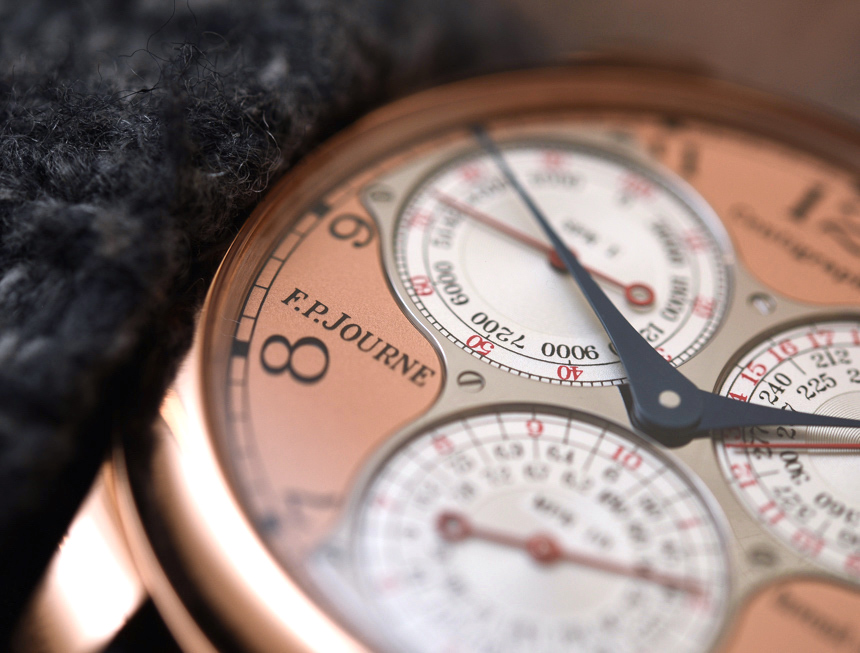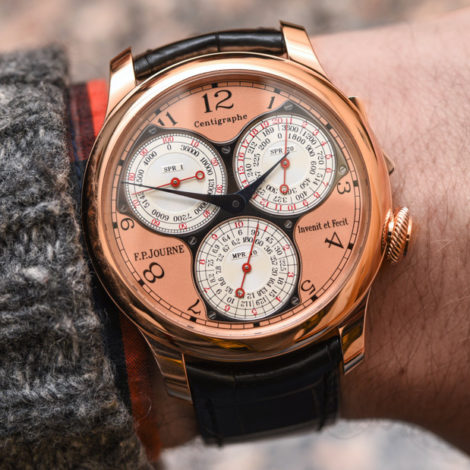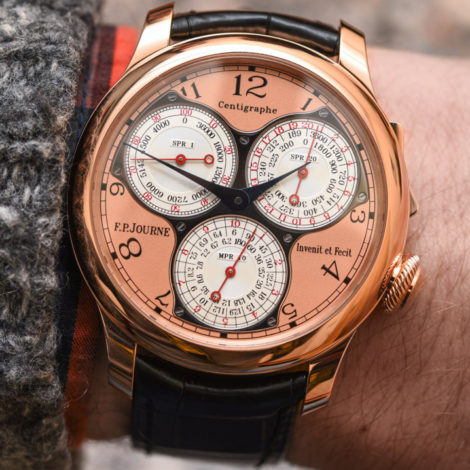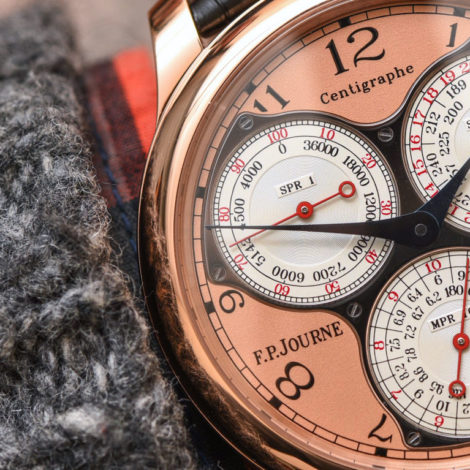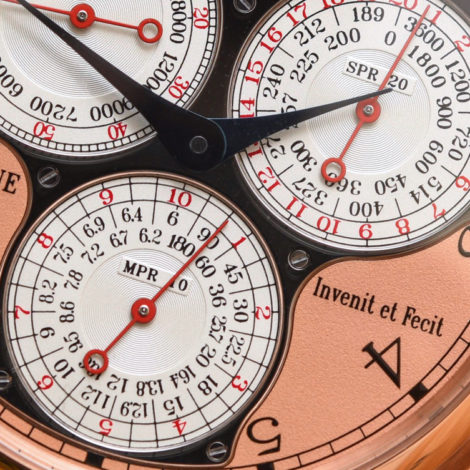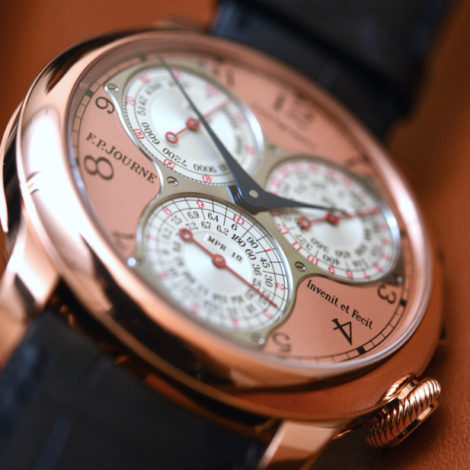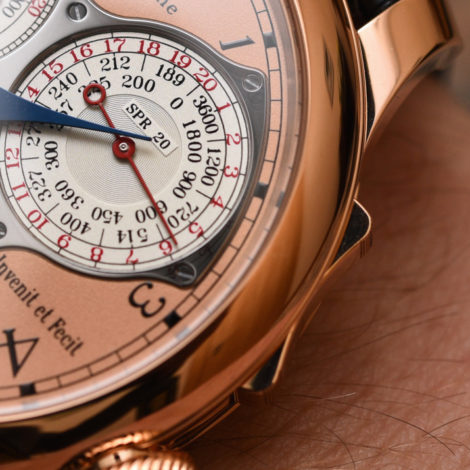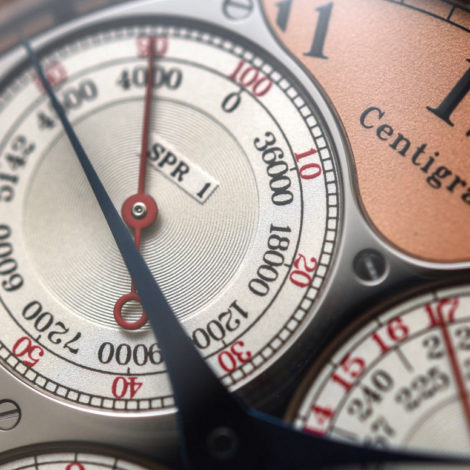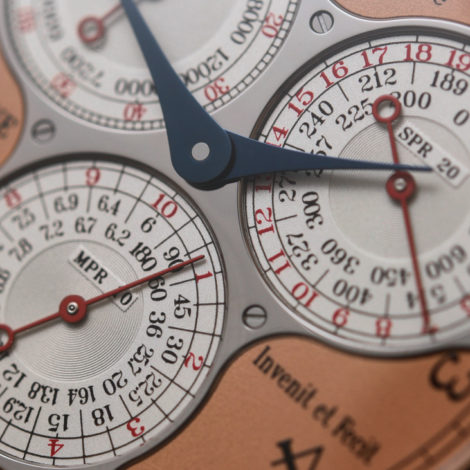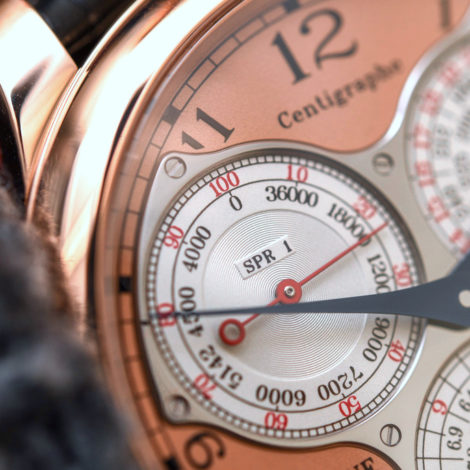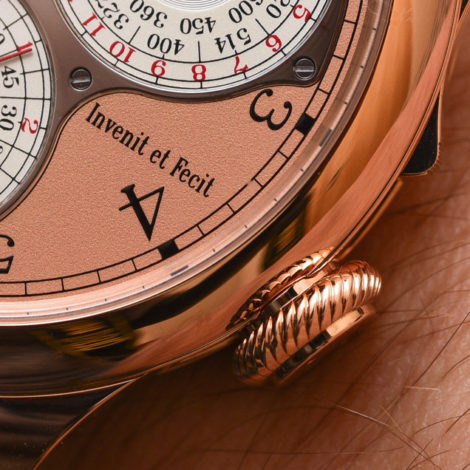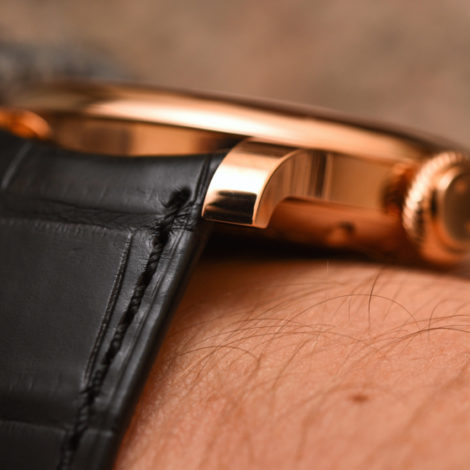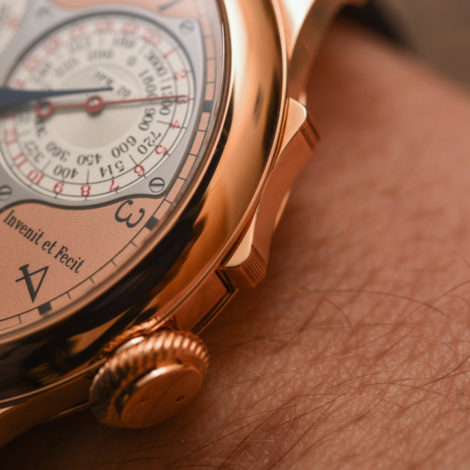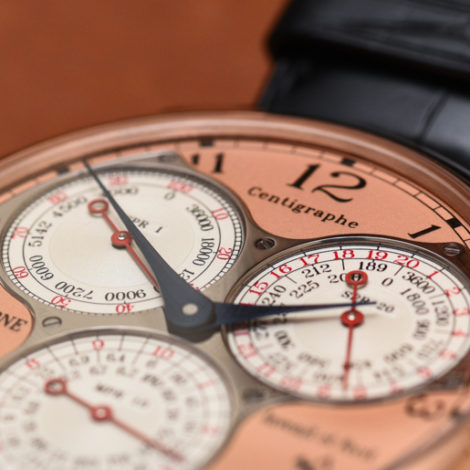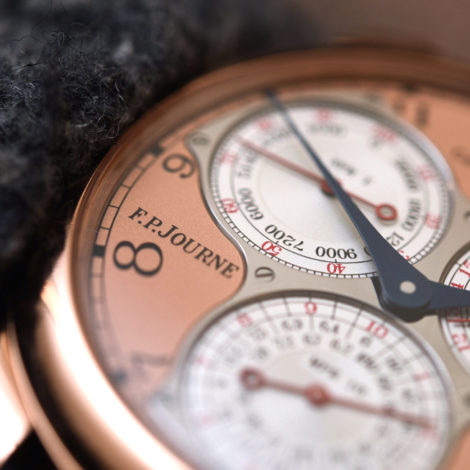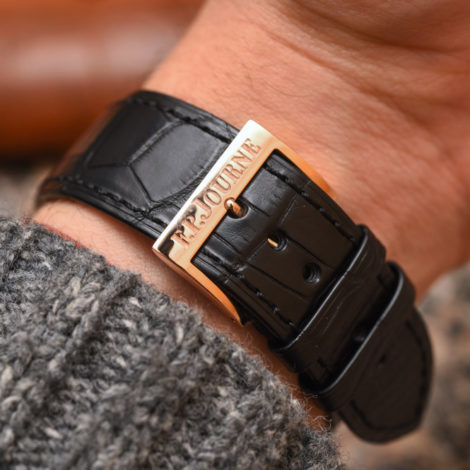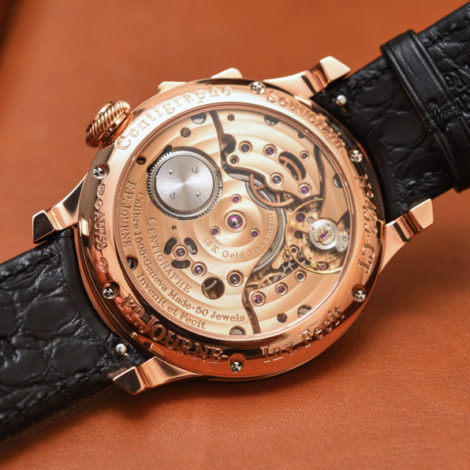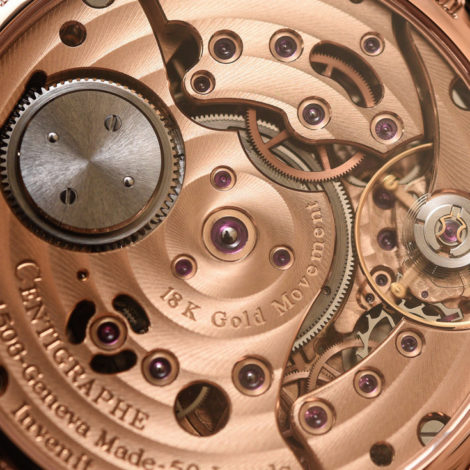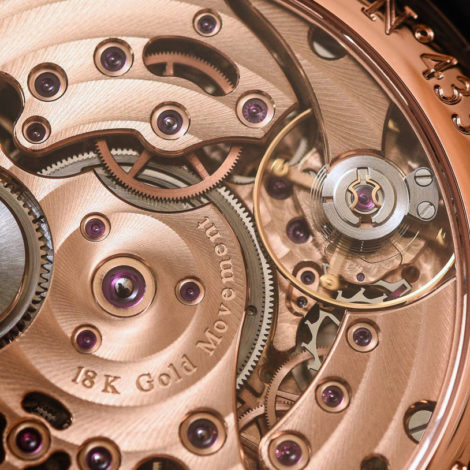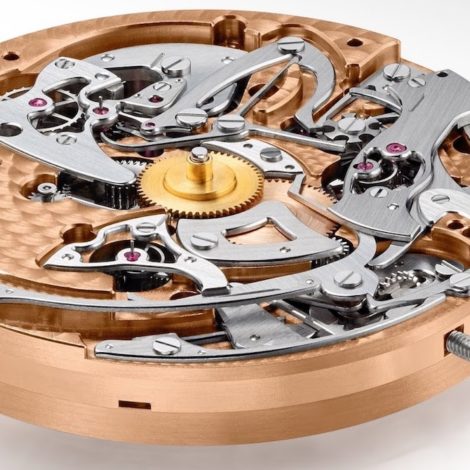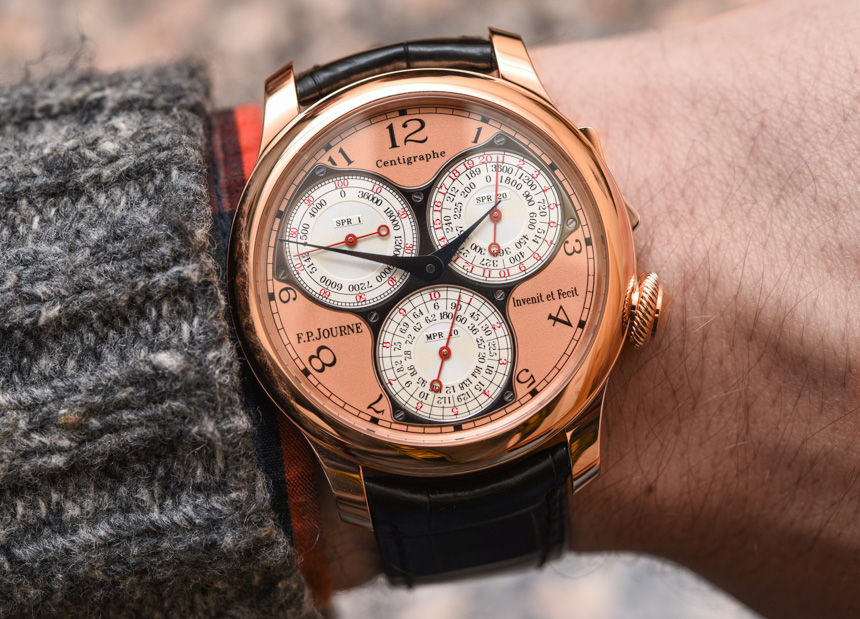
The F.P. Journe Centigraphe Souverain is a watch I’ve had on my mind for quite a while. Not that it was a burden – wish all my distractions were as easy and fun as a 1/100th second chronograph from one of fine watchmaking’s living greats. Funnily enough, what I figured is that it is one very atypical typical-chronograph for a handful of reasons. Let me explain.
If I could ask just three questions from a watch wizard, knowing that I’d get the exact answers to them, one of them would be how many people wearing chronographs (cheap or expensive ones) actually know what the little sub-dials and scales are for. I anticipate I’d learn a shocking – and also highly entertaining – figure, since I keep hearing from sales people and watchmakers how most customers don’t care to have the faintest idea. They just like the more complex look lent by the pushers and sub-dials and all the fancy text.
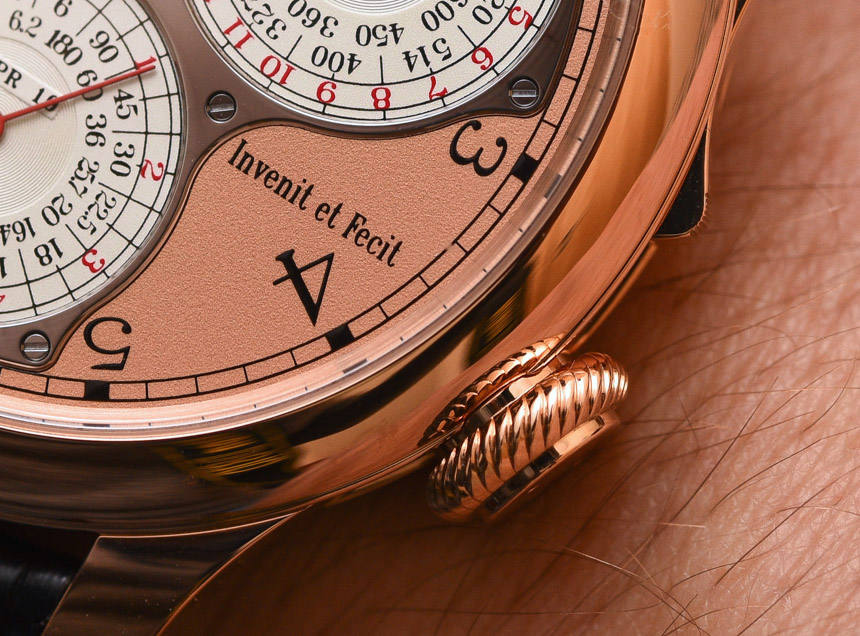
Now, there can be little doubt to the customer base of F.P. Journe being much more refined and/or nerdy and/or demanding than the average watch buyer and wearer. And yet, upon closer inspection, the Centigraphe appears to have been designed to be the unusable and incomprehensible chronograph for the watch snob, the sort who but of course knows what a tachymeter scale is and of course knows the different references of a Newman Daytona inside out. The Centigraphe is so ridiculously over the top in its readouts and functionalities, it goes beyond the most stretched limits of utility in an impressive way, even by luxury watch standards.
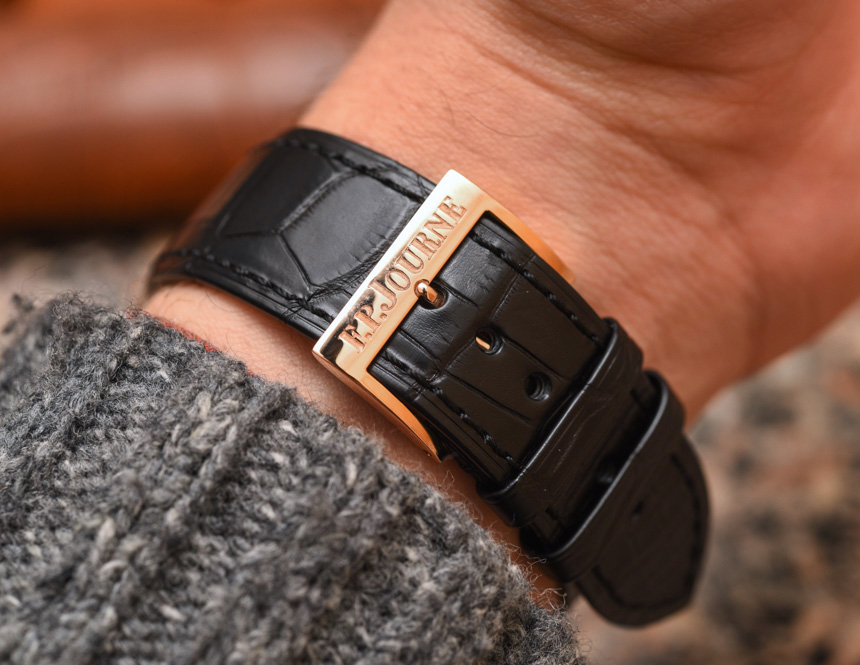
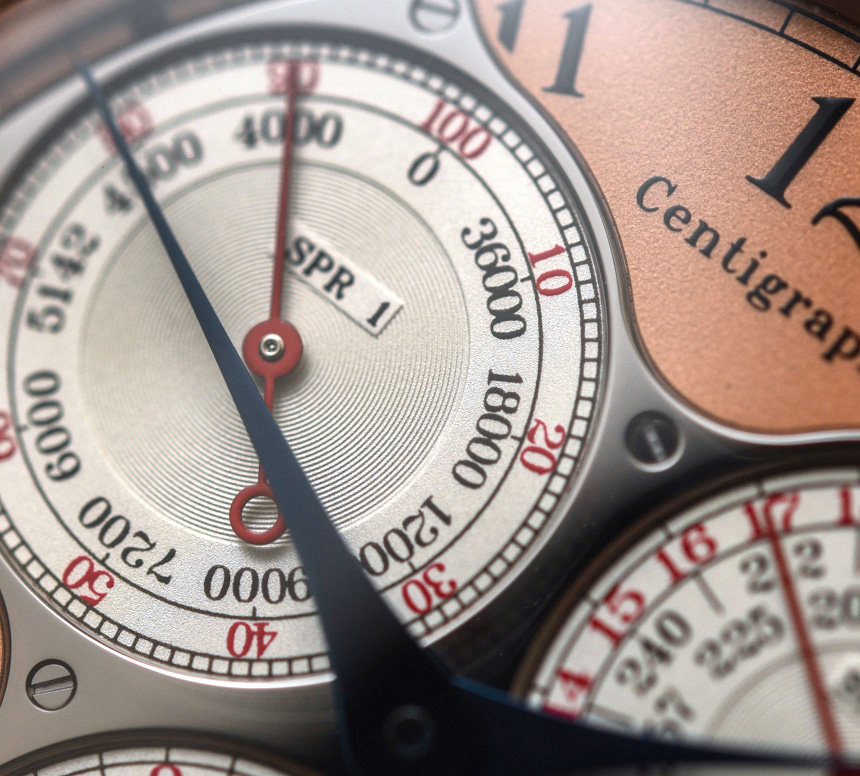
Here, I have all the specifics for you. First, the F.P. Journe Centigraphe Souverain features a 1/100th of a second chronograph readout – clearly, you’d need to build a very precise and most likely digital machine to operate with the sort of precision required to make proper use of such an indication.
Second, and this is my favorite and a direct quote from the F.P. Journe description of this watch: on the Centigraphe Souverain “The tachometer scale (massive sic erat scriptum right there, as it’s actually a tachymeter scale) converts time units for 1 kilometre into speeds ranging from 6km/h – walking pace – to 36,000km/h, well above the escape velocity of a rocket going into low-level orbit.”

“…The escape velocity of a rocket going into low-level orbit!” Oh boy, just imagine the serenity of yourself wearing your favorite suit and tie, sipping a fine single malt, and wearing your red gold F.P. Journe, sitting all alone atop a rocket that’s casually travelling into low-level orbit! You reach for the superbly engineered, pivoting pushers on the side of the gracefully curved 18k red gold case, and you press start… and then “Stop!” in quick succession, as the SPR 1 sub-dial’s red hand – painstakingly styled for a most precise reading – advances to the 36000 segment… And there, at that very moment, sitting on your rocket, you have, with utmost precision, determined your speed. If this watch is not yet marketed to a certain public figure in North Korea, I suggest that to be changed immediately, for this is one Un-ique moment for sure.
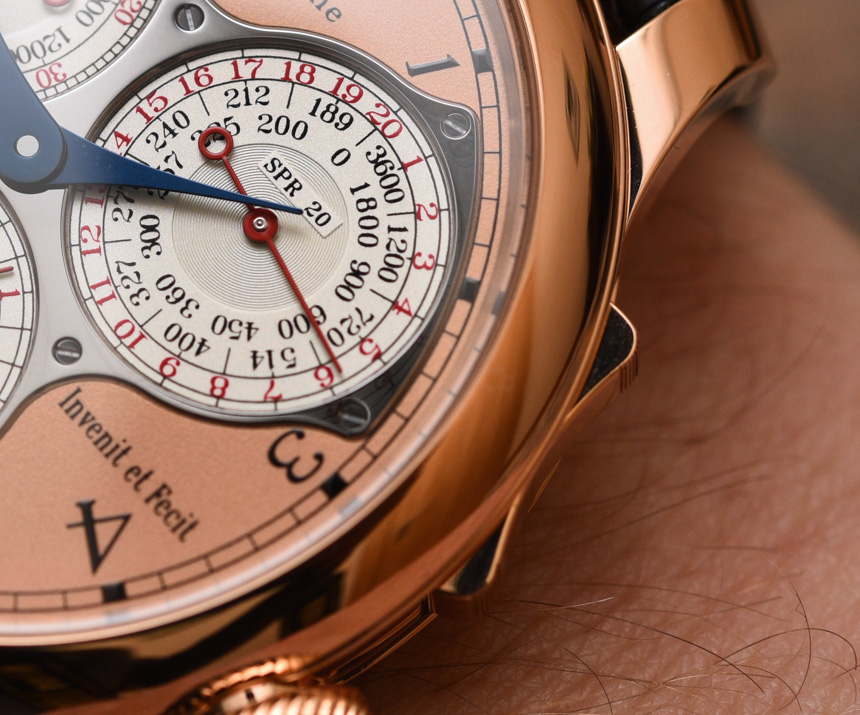
Making all this utterly impractical and yet equally impressive stuff possible is the hand-wound F.P. Journe caliber 1506 that displays running hours and minutes via the typical Journe-style hands mounted in the center, along with three sub-dials to go with the 1/100th of a second, 20-second, and 10-minute indications of the chronograph. As such, the chronograph is capable of displaying only up to 10 minutes – not out of the ordinary for high-precision mechanical chronographs.
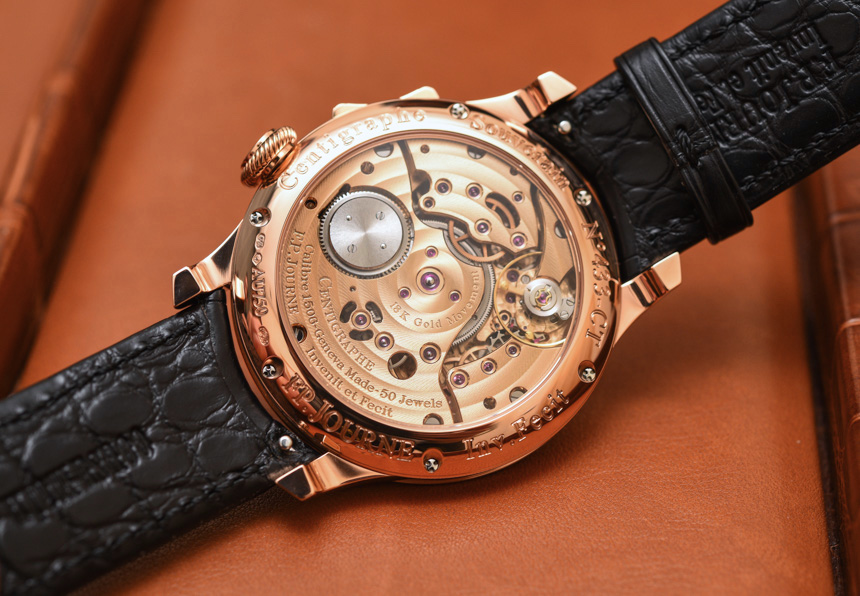
The way the chronograph works is of course absolutely ingenious – the only caveat is that pretty much all its parts are hidden on the dial side. The Centigraphe Souverain, as its name implies, relies on the chronograph’s 1/100th, 20-second, and 10-minute indications being powered by different wheel trains, themselves driven by the center of the mainspring – a system that Journe patented for the Sonnerie Souveraine that, mind you, has a considerably more spectacular caseback view (hands-on here).
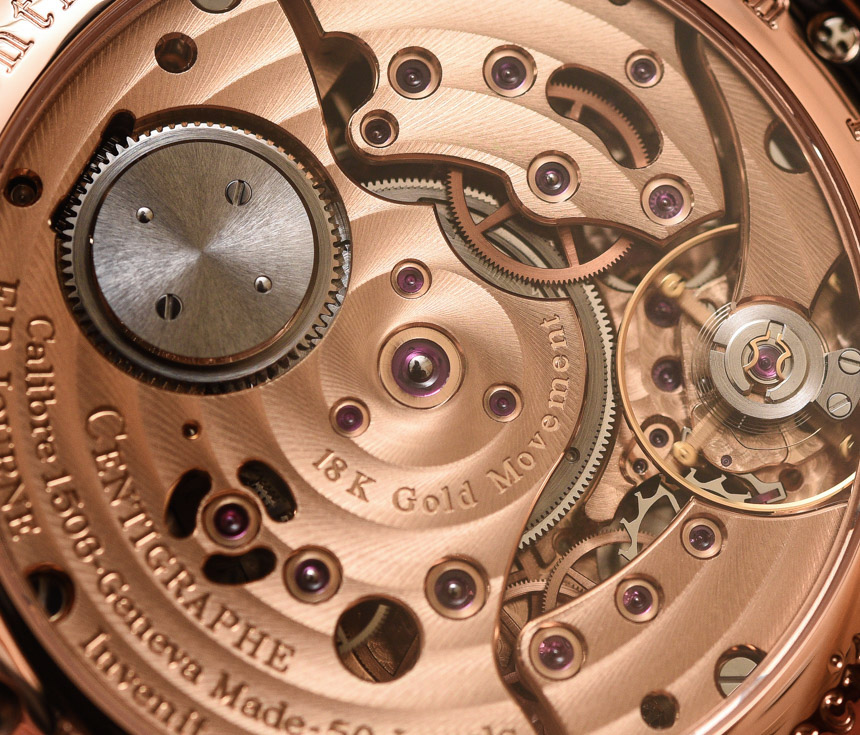
As you’ll see on the image above, the mainspring in the center technically has more than one wheel train connected to it. The one in the lower right of the image clearly ends in the escapement wheel and then in the balance wheel and so is the gear train of the main timekeeping function. The gear train in the opposite direction of the balance wheel, barely visible off to the lower left, is the one that drives the 10-minute counter of the chronograph.
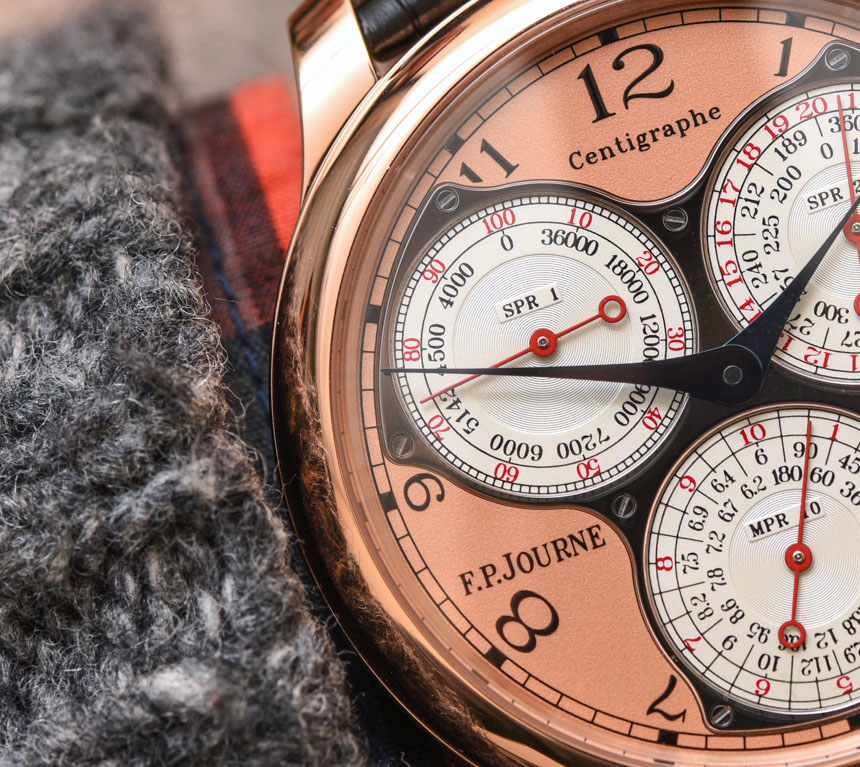
The really tricky bit, then, is how the 1/100th and 20-second counters receive drive: the 1/100th counter is actually sort of a foudroyante, as in it is linked to the escapement wheel through a clever combination of vertical and horizontal clutches. When the chronograph is started, the 1/100th counter’s wheel is vertically moved so that it engages with the wheel that shares its pinion with the escapement wheel (technically a foudroyante).
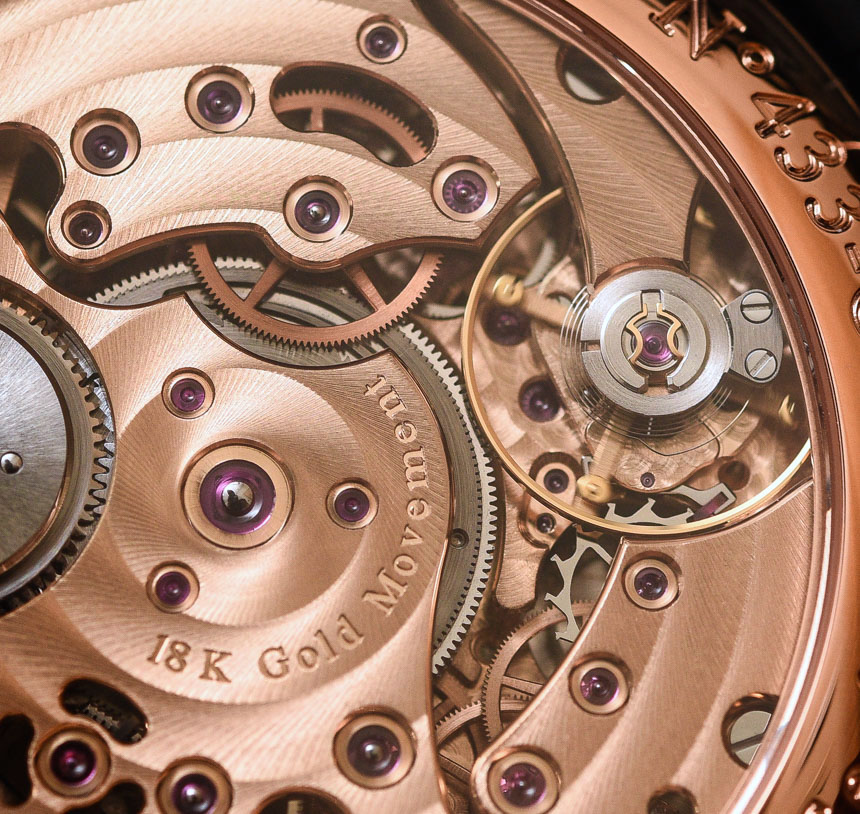
Technically, the 1/100th counter is a 1/6th of a second counter that nevertheless can be stopped in between the 6 jumps of the foudroyante. As such, the 1/100th counter does not progress in a perfectly smooth, gliding motion like, say, a Spring Drive, but rather progresses in smooth and quick jumps between the six advancements, like a foudroyante in a 21,600vph movement would naturally do. However, because it is a vertical and not a horizontal clutch for the 1/100th, it can disengage at any point from the flowing-jumping series of advancements. One could argue that it could be a one-gazillionth chronograph, as it receives a quasi-continuous drive that it can disengage from at any moment in time.
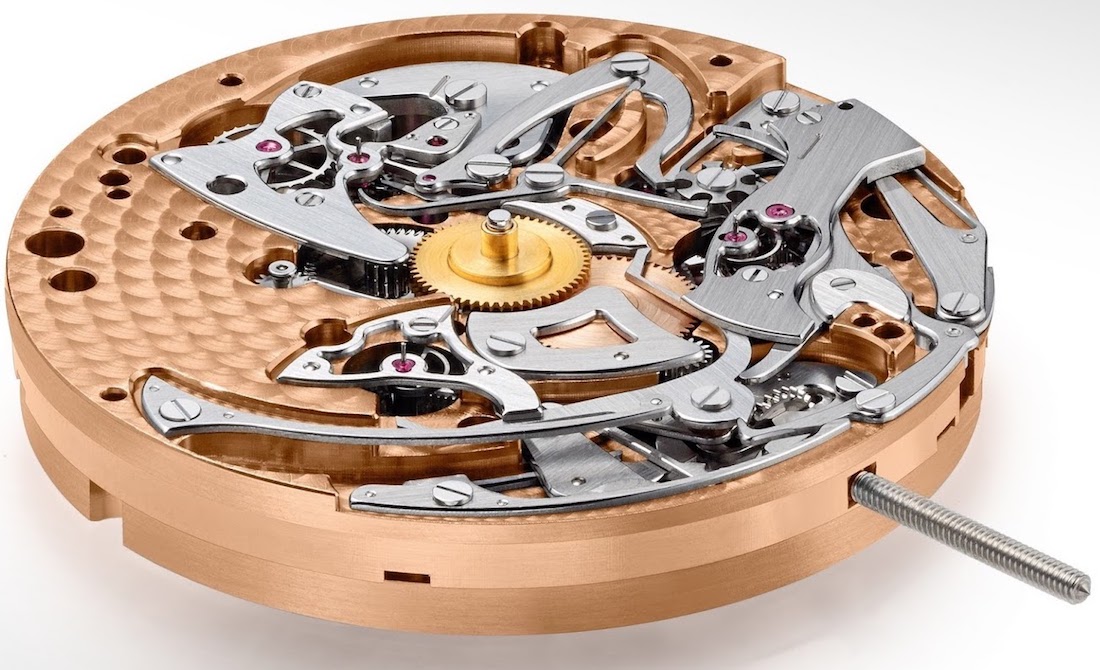
Relax not, as we’re far from touching on all the complexities. The 20-seconds counter is linked to the 1/100th counter through an extensive wheel train that arches around the centrally mounted mainspring barrel. The center piece of this wheel train connecting the two counters is an intermediate wheel that is directly driven by the barrel, hence relieving the timekeeping mechanism from extensive strain and loss of torque every time the chronograph is started. The 10-minute counter is driven by a wheel train separate from the one connecting the 1/100th and 20-second counters.
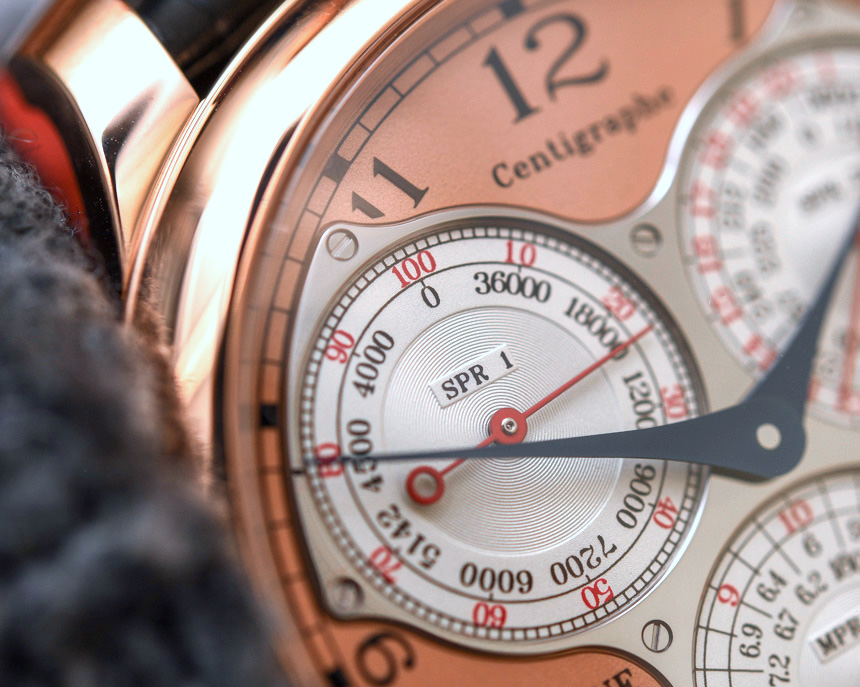
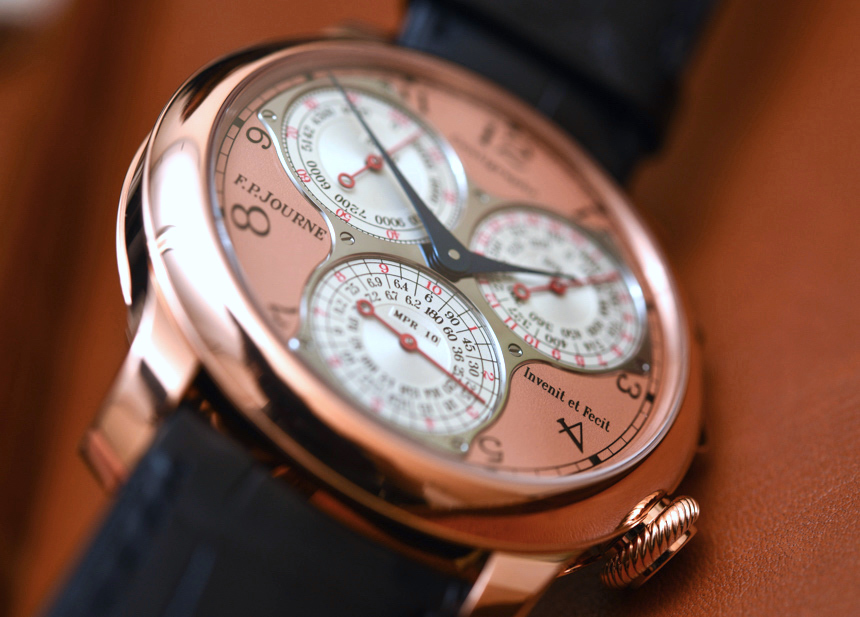
You see? From determining the average speed of low-orbiting rockets through multiple gear trains, clutches, and 1/100th of a second indications, this is one atypical typical-chronograph. With all due respect to every Centigraphe owner (whose Centigraphe picked in excellent taste I greatly covet), I have trouble fighting my doubts when it comes to thinking everyone rocking a Centigraphe has an absolutely clear understanding of the whys and hows that this movement has in store for them. In fact, even after extensively researching this movement, I am absolutely sure François-Paul and his team could point out further amazing technical details and quirks.
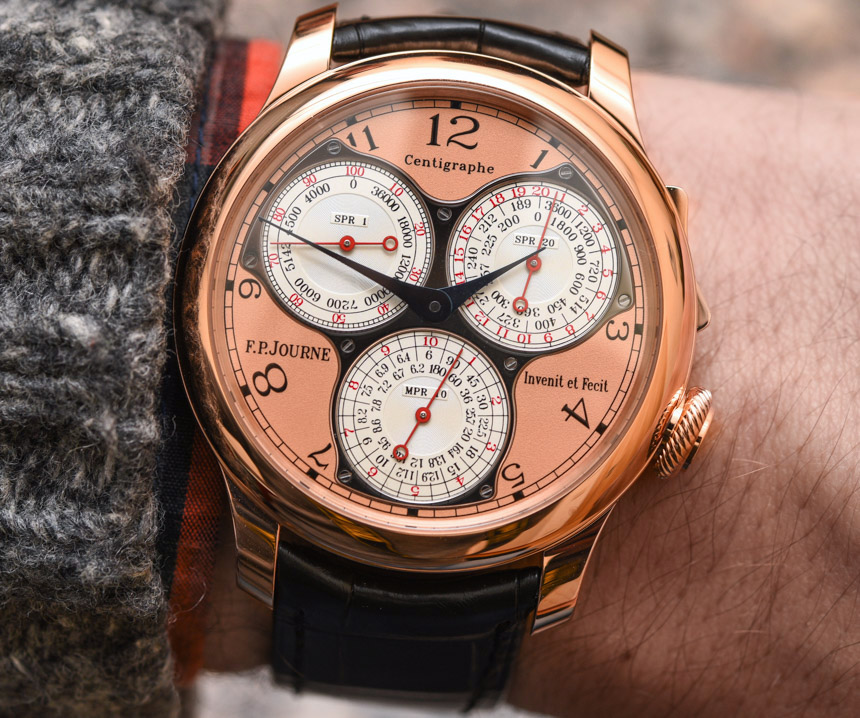
Most important though, after all is said and done, it is all this positively mind-numbing complexity that causes so many of us to enjoy and appreciate the works of today’s watchmaking geniuses. Like the ordinary watch wearer who picks a chronograph for its more complex looks, we too need to be given the option of a chronograph so beautifully over-engineered that it exceeds our most daring dreams – and comprehension. Price for the F.P. Journe Centigraphe Souverain in its 40mm wide and just 10.1mm thick 18k red gold case is $59,200. fpjourne.com

